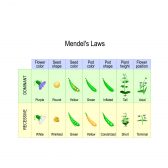Definition
noun
The numerous tiny-walled, fluid-filled cells that lie in the ethmoid bone of the skull (i.e. specifically lying in between the orbits and the upper parts of the nasal cavities), and collectively form the ethmoid sinus
Supplement
The ethmoid (ETH-moyd) bone is that part of the skull in between the orbits and separates the nasal cavity from the brain. It is made up of three parts: (1) cribriform plate, (2) ethmoidal labyrinth, and (3) perpendicular plate.
The ethmoidal labyrinth consists of several tiny air-filled cells called ethmoid air cells, which are separated from one air cell to another by thin septa. Collectively, they form an ethmoidal sinus.
The ethmoid air cells are divided into three groups based on their communication with the nasal cavity:
(1) anterior ethmoid air cells that drain into the infundibulum of the middle meatus
(2) middle ethmoid air cells that drain into the middle meatus on or above the ethmoid bulla
(3) posterior ethmoid air cells that drain into the superior meatus
The function of the ethmoid air cells may be associated with the warming, humidifying, and filtering of inhaled air. They are present at birth, and grow through puberty, particularly until the age of 12.
Word origin: Greek ethmos (sieve) + eidos (form)
Also called:
- cellulae ethmoidales
- ethmoidal cells
See also:







